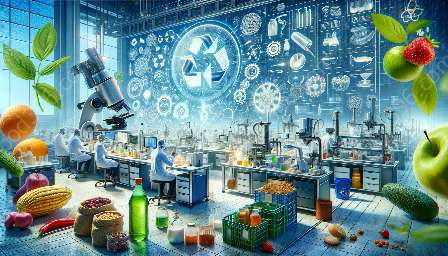Food-induced anaphylaxis, food allergy, and food intolerance are complex and critical topics in the realm of food science and technology. Understanding the mechanisms, causes, and management of food-induced anaphylaxis is vital for both consumers and professionals in the food industry. Let’s delve into each topic to gain a comprehensive understanding of these important areas.
Food-Induced Anaphylaxis
Food-induced anaphylaxis refers to a severe, life-threatening allergic reaction triggered by the consumption of specific foods. This response is rapid in onset and involves multiple organ systems, with symptoms ranging from hives and swelling to a drop in blood pressure and difficulty breathing. It is crucial for individuals susceptible to anaphylaxis to identify and avoid the offending food(s) to prevent potentially fatal outcomes.
Causes of Food-Induced Anaphylaxis
The root cause of food-induced anaphylaxis lies in the body’s immune system overreacting to certain food proteins. Common triggers include peanuts, tree nuts, shellfish, fish, milk, eggs, and soy. The body produces an excessive amount of immunoglobulin E (IgE) antibodies, leading to the release of inflammatory substances such as histamine when the individual encounters the allergen. This cascade of events results in the characteristic symptoms of anaphylaxis.
Management of Food-Induced Anaphylaxis
The key to managing food-induced anaphylaxis is strict avoidance of the triggering food(s) and having access to emergency medications such as epinephrine (adrenaline) to counteract severe reactions. Individuals at risk of anaphylaxis must carry epinephrine auto-injectors and educate their close contacts on how to administer them in case of an emergency.
Role of Food Science and Technology in Managing Food-Induced Anaphylaxis
Food science and technology play a crucial role in the prevention of food-induced anaphylaxis. Manufacturers and food scientists must meticulously label products and ensure the absence of allergenic ingredients. Advancements in food processing techniques, such as protein hydrolysis and allergen detection methods, contribute to creating safer food products for individuals with food allergies.
Food Allergy and Intolerance
Food allergy and intolerance are two distinct conditions with varying mechanisms and manifestations. It is essential to differentiate between the two to provide proper management strategies for affected individuals.
Food Allergy
Food allergy involves an immune system response to a specific food, with symptoms ranging from mild itching and hives to severe anaphylactic reactions. The immune system mistakenly identifies certain food proteins as harmful and mounts an immune response, leading to the release of histamine and other inflammatory mediators. The most common food allergens include peanuts, tree nuts, fish, shellfish, milk, eggs, soy, and wheat.
Food Intolerance
Food intolerance, on the other hand, does not involve the immune system and is typically associated with the digestive system’s inability to process certain components in food. Common examples of food intolerance include lactose intolerance, gluten intolerance, and sensitivity to food additives such as sulfites. Symptoms of food intolerance may include gastrointestinal discomfort, bloating, and diarrhea.
Considerations in Food Science and Technology
Food scientists and technologists play a pivotal role in catering to the needs of individuals with food allergies and intolerance. This involves developing alternative ingredients, creating specialized products, and ensuring clear labeling and cross-contamination prevention to safeguard sensitive individuals.
Food Science and Technology Advancements
Advancements in food science and technology have significantly impacted the management of food-induced anaphylaxis, food allergy, and intolerance. Several key developments have emerged to improve consumer safety and food product quality.
Allergen Detection and Analysis
State-of-the-art analytical methods, such as DNA-based techniques and mass spectrometry, allow for the accurate detection and quantification of allergenic proteins in food. These methods are instrumental in verifying the absence of allergens in hypoallergenic food products and in monitoring cross-contamination in food processing facilities.
Innovative Ingredient Substitution
Food scientists continuously explore alternative ingredients and processing methods to create hypoallergenic or allergen-free food products. These innovative substitutions cater to individuals with allergies and intolerances, expanding the options available to them for a varied and nutritious diet.
Personalized Nutrition and Diagnostics
The field of personalized nutrition and diagnostics leverages cutting-edge technologies to identify individualized dietary requirements and sensitivities. This approach allows for tailored dietary recommendations and customized food products that align with an individual’s specific food-related needs.
Enhanced Food Labeling and Consumer Education
Clear and comprehensive food labeling, including the disclosure of potential allergens and allergen cross-contact, is crucial in enabling consumers to make informed food choices. Food science and technology contribute to the development of labeling regulations and educational initiatives to enhance consumer awareness and safety.
Conclusion
Food-induced anaphylaxis, food allergy, and food intolerance are multifaceted topics that intersect with the realms of food science and technology. Understanding the complexities of these areas is essential for ensuring consumer safety, advancing food product development, and promoting informed decision-making. By exploring the interconnectedness of food-induced anaphylaxis, food allergy, and intolerance, and their relationship with food science and technology, we can foster a deeper appreciation for the importance of managing and accommodating individuals with specific dietary requirements and sensitivities.

